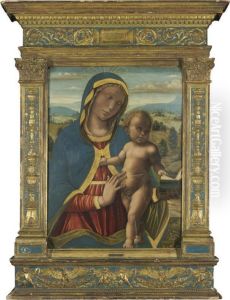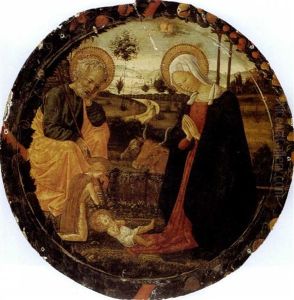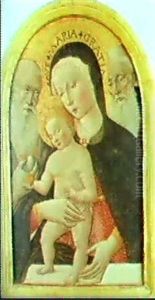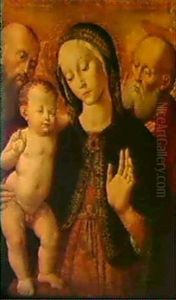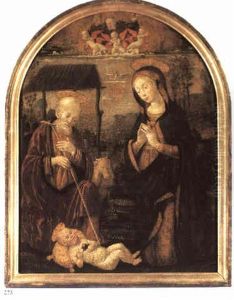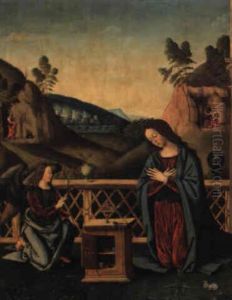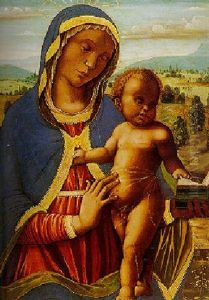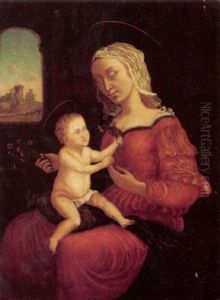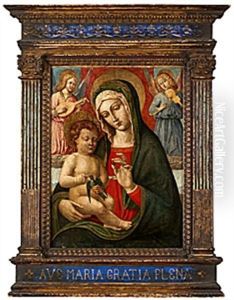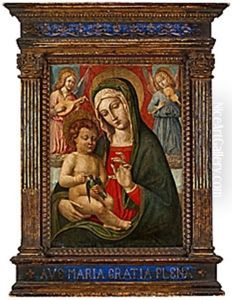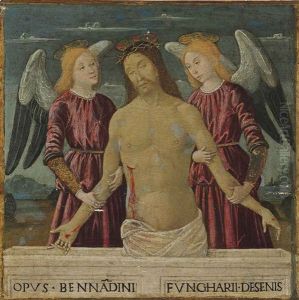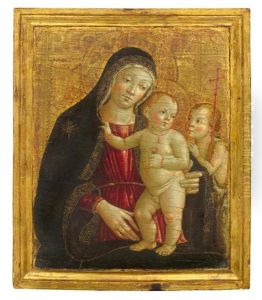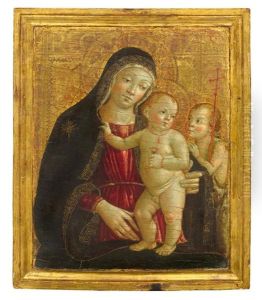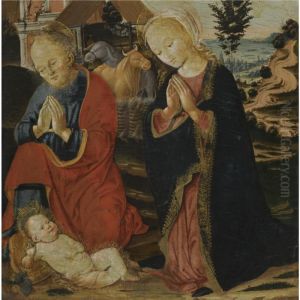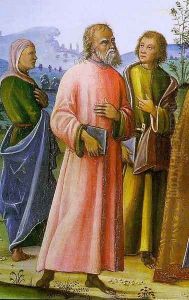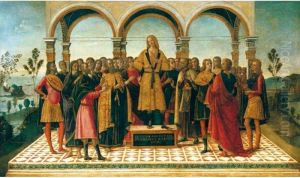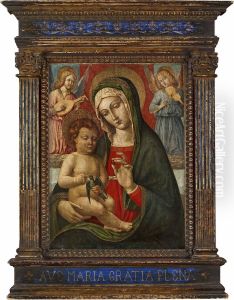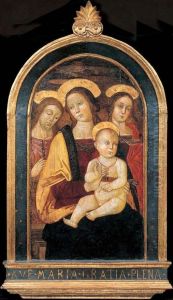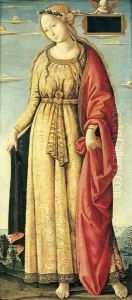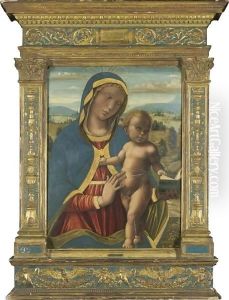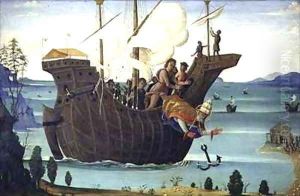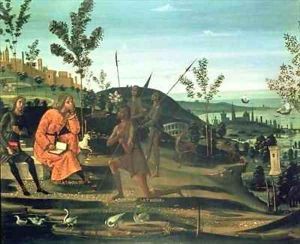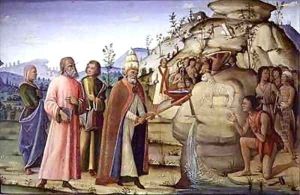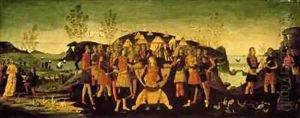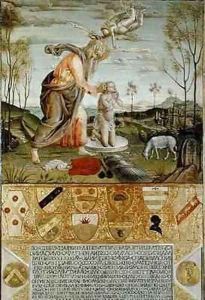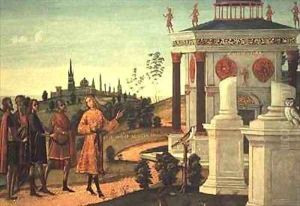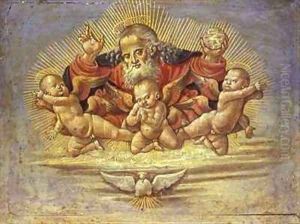Bernardino Fungai Paintings
Bernardino Fungai was an Italian painter of the Renaissance period, active mainly in his hometown of Siena. Born in 1460, Fungai is remembered for his distinctive style that combines elements of the Sienese school with influences from the Florentine and Umbrian schools, reflecting the broader trends of the Renaissance movement in Italy.
Fungai's early life is not well-documented, but it is known that he was the son of Giacomo di Giovanni, a minor painter from whom he likely first learned the art of painting. Bernardino's works are characterized by their vivid colors, delicate landscapes, and detailed figures, which often imbue his religious subjects with a serene, otherworldly quality.
Throughout his career, Fungai was commissioned to decorate several important buildings and churches in Siena and its surroundings. One of his most notable works is the fresco decoration of the Chapel of St. Catherine of Siena in the Basilica of San Domenico, Siena, which showcases his ability to create complex compositions filled with emotion and spiritual depth.
Fungai's work also includes altarpieces, such as the 'Madonna and Child with Saints' for the Sienese church of San Domenico, and 'The Coronation of the Virgin,' now housed in the Pinacoteca Nazionale in Siena. These works exemplify his mastery in portraying divine figures and his skill in using light to enhance the spiritual atmosphere of his scenes.
Despite his talent and contributions to the Sienese Renaissance, Bernardino Fungai has not received the same level of recognition as some of his contemporaries. His works, however, continue to be studied for their unique blend of local tradition and broader Renaissance innovations, and they provide valuable insights into the religious and cultural contexts of late 15th and early 16th century Siena.
Bernardino Fungai died in 1516, leaving behind a body of work that remains admired for its beauty and devotion. His legacy is preserved in the collections of several major museums and in the churches and public buildings of Siena, where his frescoes and paintings continue to be appreciated by visitors from around the world.
